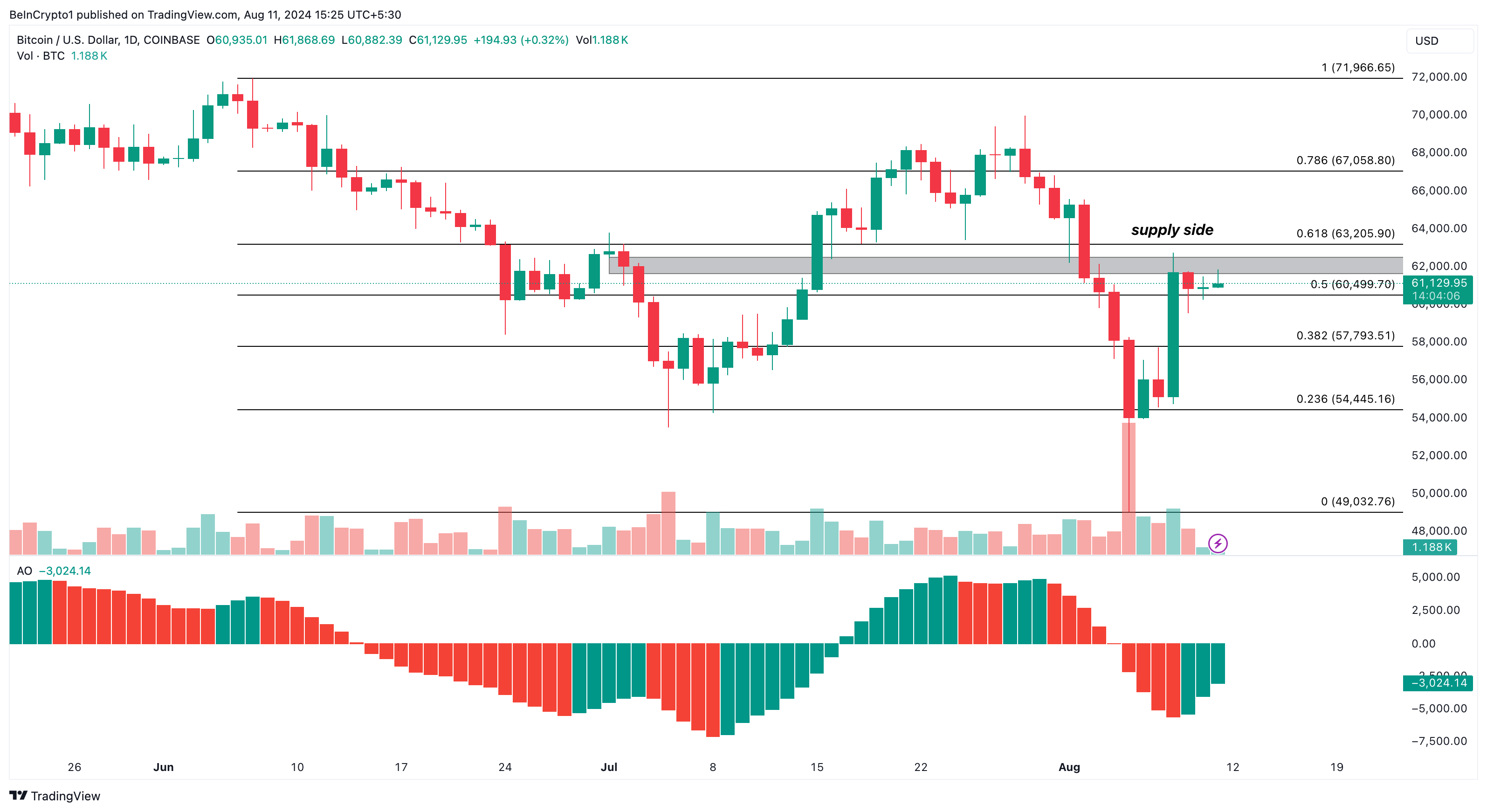Bitcoin Plunges, Holders Lose Confidence
Last Monday, Bitcoin (BTC) holders experienced a significant drop in price, plummeting from $61,000 to $54,000 within hours. This sharp decline marked one of the worst days of the year for Bitcoin, resulting in substantial losses and liquidations. Despite a partial recovery, data suggests that Bitcoin’s price may still be vulnerable to further declines.
Bitcoin Holder Behavior Lacks Confidence
One key indicator of this apprehension is the change in the net position of Bitcoin holders. The Holder Net Position Change measures whether long-term holders are accumulating more tokens or reducing their exposure to the cryptocurrency. An increase in this number indicates that holders are buying more Bitcoins, signaling a potential price increase. Conversely, a decrease suggests that long-term holders are selling, exerting downward pressure on the price.
Recent data from Glassnode reveals that long-term holders have been reducing their positions since August 5. Despite spot price increases, 4,881 BTC were sold on Saturday, August 10.
Additionally, a decline in net inflows into spot ETFs during recent trading sessions may indicate falling prices. On Friday, outflows exceeded inflows by -$89.73 million according to SoSoValue, potentially impacting Bitcoin’s ability to sustain the $60,000 range.
BTC Price Prediction: $61,000 is Vulnerable
Currently trading at $61,122, Bitcoin is approaching a supply zone between $61,616 and $62,477. If it reaches this area, a rejection could lead to a drop below $60,000.
Despite some bullish signals, the Momentum Oscillator (AO) remains negative, indicating weak momentum and a potential decline. While a double-digit correction is unlikely, a short-term drop to $60,499 could occur.

Rising ETF inflows and increased accumulation by long-term holders may negate this bearish outlook, potentially leading to a rebound in Bitcoin’s price to $63,205 or $67,058.
The information provided on the BeInCrypto website is for informational purposes only and should not be considered financial advice. Users are urged to conduct their own research before making any investment decisions.


